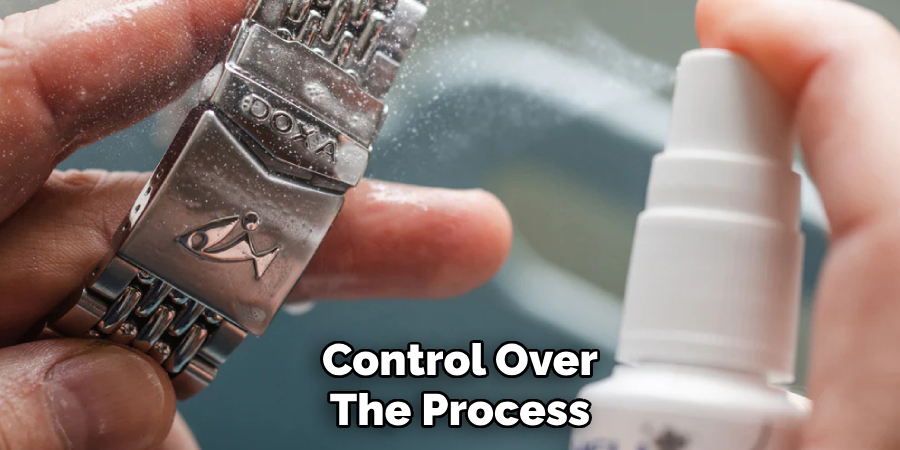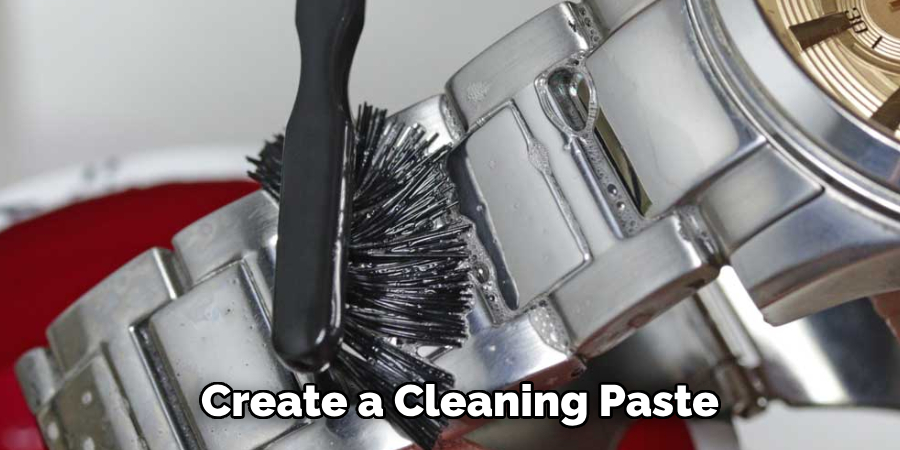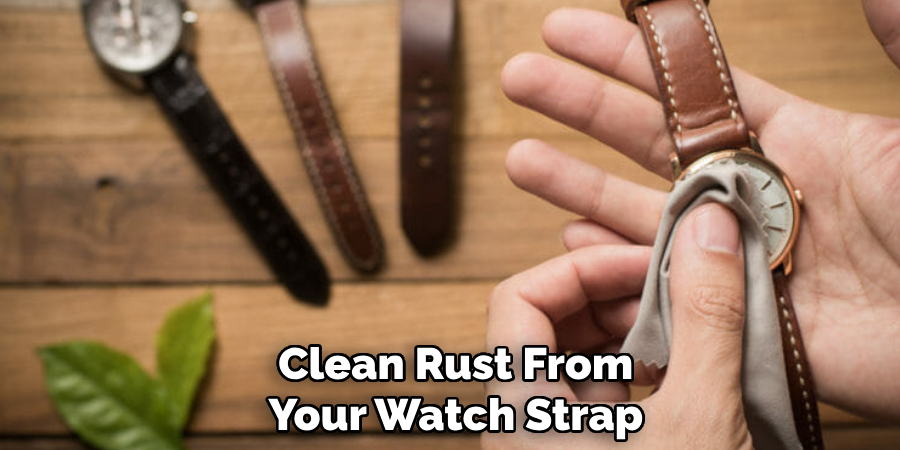Rust on a metal watch strap can be a pesky problem, diminishing both the appearance and functionality of your cherished timepiece. Over time, exposure to moisture and humidity can cause metal parts to corrode, leading to unsightly rust. Fortunately, with the right techniques and a bit of care, it’s possible to remove rust and restore your watch strap to its former glory.

This guide on how to rust out of a metal watch strap will walk you through step-by-step processes to effectively clean rust from your metal watch strap, ensuring it looks pristine and extends its lifespan. Whether dealing with light tarnish or more severe rusting, these methods will provide you with the tools and knowledge needed to rejuvenate your watch.
Why Use These Techniques?
Before we dive into the specific techniques for rust removal, it’s essential to understand why these methods are beneficial. Firstly, using DIY cleaning methods saves you money and time. Professional watch cleaning services can be expensive and may take weeks to complete. With a bit of effort, you can achieve similar results at home in just a matter of hours.
Secondly, by taking care of your watch strap yourself, you have more control over the process. You can choose which products and techniques to use, ensuring the safety and effectiveness of your watch. And finally, regular cleaning and maintenance can prevent future rusting, extending the lifespan of your watch strap.

Tools and Materials You’ll Need
To effectively rust out a metal watch strap, you’ll need to gather a few tools and materials beforehand. Here’s a list of essential items to have on hand:
- Microfiber Cloth or Soft-bristled Toothbrush
- White Vinegar or Lemon Juice
- Baking Soda or Salt
- Toothpaste (Non-gel)
- Wd-40 or Mineral Oil
- Soft Cloth for Polishing (Optional)
8 Step-by-step Guides on How to Rust Out of a Metal Watch Strap
Step 1: Disassemble Your Watch Strap
Before starting the rust removal process, it’s crucial to disassemble your watch strap for easier and more thorough cleaning. Begin by placing your watch on a soft, clean surface to avoid scratches or damage. Using a small flathead screwdriver or a spring bar tool, carefully remove the watch strap from the watch case by compressing the spring bars that hold it in place.
Some watch straps consist of multiple links or pieces, so if possible, separate these to clean each part individually. Keep any small components, like spring bars or screws, in a safe place to ensure successful reassembly after cleaning.
Step 2: Clean the Watch Strap with Vinegar or Lemon Juice
Vinegar and lemon juice both contain acidic properties that can dissolve rust, making them excellent natural cleaners for metal watch straps. Dip a soft-bristled toothbrush into white vinegar or lemon juice and gently scrub the rusted areas of your watch strap. For more severe rusting, you may need to soak the strap in vinegar for up to an hour before scrubbing.
Once you’ve cleaned all areas affected by rust, rinse off the vinegar or lemon juice with warm water thoroughly.
Step 3: Create a Baking Soda or Salt Paste
If there are still some remnants of rust on your watch strap, create a cleaning paste using either baking soda or salt. Mix either one with water to form a thick paste that can be applied directly to the rusted areas. Using a soft-bristled toothbrush or microfiber cloth, gently scrub the paste onto the rust until it begins to lift.

But be careful not to use too much force, as this can scratch or damage the metal. Rinse off the paste with warm water after scrubbing.
Step 4: Use Toothpaste for Polishing
After removing most of the rust, you may notice that your watch strap has lost its shine and appears dull. To restore its luster, apply a small amount of non-gel toothpaste onto a soft cloth and rub it onto the entire surface of the strap. The mild abrasives in toothpaste can effectively polish metal surfaces without causing any damage.
Once finished, rinse off the toothpaste and dry the watch strap thoroughly with a clean cloth.
Step 5: Soak in WD-40 or Mineral Oil
If the rust has deeply penetrated the metal, you may need to use a stronger solution. Soak your watch strap in WD-40 or mineral oil for 15-20 minutes to loosen stubborn rust particles. These products are specifically designed to dissolve rust and can be found at most hardware stores.
After soaking, use a soft-bristled toothbrush or microfiber cloth to gently scrub away any remaining rust. Rinse off the WD-40 or mineral oil with warm water.
Step 6: Dry the Watch Strap Thoroughly
After cleaning, it’s crucial to dry your watch strap completely before reassembling it. Use a clean cloth or paper towel to wipe away any excess water and allow the strap to air dry for a few hours. You can also use a hairdryer on low heat to speed up the drying process.
It’s essential to make sure the strap is completely dry before reattaching it to your watch, as any leftover moisture can lead to future rusting.
Step 7: Reassemble Your Watch Strap
Once your watch strap is fully dry, it’s time to put all the pieces back together. Refer to any notes or photos you took during disassembly to ensure proper reassembly. Use a spring bar tool or small flathead screwdriver to compress and attach the spring bars back onto the watch case.
If you have any trouble with reassembling your watch strap, consult the manufacturer’s instructions or seek professional help.
Step 8: Regular Maintenance and Prevention
Prevention is key when it comes to rusting on metal watch straps. To keep your strap looking pristine and avoid future rust, regularly clean and maintain it using these techniques. You can also periodically apply a thin layer of WD-40 or mineral oil onto the surface of the strap to create a protective barrier against moisture.

And remember to store your watch in a dry place when not wearing it, as exposure to water and humidity can cause rusting.
Following these simple steps on how to rust out of a metal watch strap, you can effectively rust out a metal watch strap and keep it in top condition for years to come. Whether you prefer a natural cleaning method or using specialized products, the key is to be gentle and patient while removing rust from your watch strap. With regular maintenance, you can ensure that your watch always looks its best. Happy cleaning!
Do You Need to Use Professionals?
Deciding whether to seek professional help for rust removal from your metal watch strap depends on several factors, including the extent of rust damage and your comfort level with DIY methods. For minor rusting, the step-by-step guide provided can be an effective solution, enabling you to clean and restore your watch strap at home without professional assistance.
However, if the rust is extensive or if you’re concerned about damaging your watch due to intricate design or costly materials, consulting a professional may be wise. Professional cleaners have specialized tools and expertise to safely handle luxury or delicate watch straps, ensuring a thorough cleaning and restoration process. Consider your situation carefully to make the best choice for your timepiece.
Additional Tips
- It’s important to act quickly when you notice rust on your watch strap, as it can spread and cause further damage if left untreated.
- Avoid using harsh chemicals or abrasive cleaners on your watch strap, as they can strip off the protective coating and cause discoloration or scratches.
- If you regularly expose your watch to water or sweat, consider investing in a rust-resistant metal like stainless steel for your next strap replacement.
By following these tips and techniques, you can maintain the beauty and functionality of your metal watch strap for years to come. With proper care and maintenance, even heavily rusted straps can be restored to their former glory. Happy cleaning!
Frequently Asked Questions
Q: Can I Use These Techniques on Any Metal Watch Strap?
A: Yes, you can use these methods on most metal watch straps, but it’s always best to check with the manufacturer for specific cleaning instructions. Some types of metal, such as gold or silver, may require different cleaning techniques.
Q: Are There Any Alternative Cleaning Products I Can Use?
A: Yes, there are several alternative products you can use to clean rust from your watch strap, such as lemon juice and baking soda paste. You can also purchase specialized rust cleaners at hardware stores.
Q: Is It Safe to Submerge My Watch Strap in Water?
A: It depends on the type of watch strap you have. Leather or fabric straps should not be submerged in water as it can cause damage. However, most metal straps can handle being soaked or rinsed in water without any issues.

Conclusion
With these step-by-step guides on how to rust out of a metal watch strap, you now have the knowledge and tools necessary to remove rust from your metal watch strap at home. Remember to take precautions while cleaning and always use gentle methods to avoid damaging your watch.
By regularly maintaining your watch, you can extend its lifespan and keep it looking brand new for a long time. So say goodbye to unsightly rust and hello to a shiny, functional watch strap! Keep exploring the world of watches and happy cleaning!
Edmund Sumlin is a skilled author for Metal Fixes, bringing 6 years of expertise in crafting a wide range of metal fixtures. With a strong background in metalwork, Edmund’s knowledge spans various types of fixtures, from decorative pieces to functional hardware, blending precision with creativity. His passion for metalworking and design has made him a trusted resource in the industry.
Professional Focus:
- Expert in Metal Fixtures : Edmund aesthetic specializes in creating durable and innovative metal fixtures, offering both appeal and functionality. His work reflects a deep understanding of metalworking techniques and materials.
- Sustainability Advocate : He is dedicated to using sustainable practices, ensuring that every fixture is crafted with eco-friendly methods while maintaining high-quality standards.
In his writing for Metal Fixes, Edmund provides valuable insights into the latest trends, techniques, and practical advice for those passionate about metal fixtures, whether they are professionals or DIY enthusiasts. His focus on combining artistry with engineering helps others discover the true potential of metal in design.


